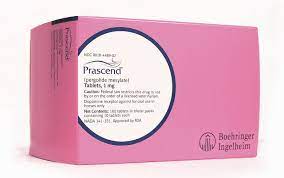Prascend 1 mg tablets for horses Species: Horses and other equidae Therapeutic indication: Pharmaceuticals: Neurological preparations: Others Active ingredient: Pergolide Product:Prascend® 1 mg tablets for horses Product index: Prascend Withdrawal notes: Not authorised for use in horses intended for human consumption. Treated horses may never be slaughtered for human consumption. The horse must have been declared as not intended for human consumption under national horse passport legislation. Not authorised for use in mares producing milk for human consumption. Presentation Each tablet contains: Active substance: 1.0 mg pergolide (as pergolide mesylate 1.31 mg) Pink, rectangular scored tablet, engraved on one side with the Boehringer Ingelheim logo and the letters “PRD”. The tablets can be divided into 2 equal parts. Uses Symptomatic treatment of clinical signs associated with Pituitary Pars Intermedia Dysfunction (PPID) (Equine Cushing’s Disease) Dosage and administration The product should be administered orally, once daily. To facilitate administration, the required daily dose should be placed in a small amount of water and/or mixed with molasses or other sweetener and agitated until dissolved. In this case, the dissolved tablets should be administered with a syringe. The whole amount should be administered immediately. Tablets should not be crushed. Starting dose The starting dose is 2 µg pergolide/kg (dose range: 1.3 to 2.4 µg/kg) body weight. Studies from the published literature cite the most common, average dose as 2 µg pergolide/kg with a range from 0.6 to 10 µg pergolide/kg (0.25 mg to 5 mg total daily dose per horse). The starting dose (2 µg pergolide/kg) should then be titrated according to the individual response as determined by monitoring (see below). Starting doses are recommended as follows: Horse Body Weight Number of Tablets Starting Dose Dosage Range 200 - 400 kg ½ 0.5 mg 1.3 - 2.5 μg/kg 401 - 600 kg 1 1.0 mg 1.7 - 2.5 μg/kg 601 - 850 kg 1 ½ 1.5 mg 1.8 - 2.5 μg/kg 851 - 1000 kg 2 2.0 mg 2.0 - 2.4 μg/kg Maintenance dose Life long treatment is anticipated for this disease. Most horses respond to therapy and are stabilised at an average dose of 2 µg pergolide/kg body weight. Clinical improvement with pergolide is expected within 6 to 12 weeks. Horses may respond clinically at lower or varying doses; it is therefore recommended to titrate to the lowest effective dose per individual based on response to therapy, whether it is effectiveness or signs of intolerance. Some horses may require doses as high as 10 µg pergolide/kg body weight per day. In these rare situations, appropriate additional monitoring is advised. Following initial diagnosis, repeat endocrinologic testing for dose titration and monitoring of treatment at intervals of 4 to 6 weeks until stabilisation or improvement of clinical signs and/or diagnostic testing occurs. Clinical signs are: hirsutism, polyuria, polydipsia, muscle wasting, abnormal fat distribution, chronic infections, laminitis, sweating, etc. The approach to treatment is the dose titration to the lowest effective dose per individual, based on response to therapy, whether it is effectiveness or signs of intolerance. Depending on the severity of the disease, time to treatment response may vary among individuals. If clinical signs or the diagnostic testing have not yet improved at the first 4 to 6 week interval, the total daily dose may be increased by 0.5 mg. In case clinical signs have improved but are not yet normalised, the veterinarian may decide to titrate or not to titrate the dose, considering the individual’s response/tolerance to the dose. In case clinical signs are not adequately controlled (clinical evaluation and/or diagnostic testing) it is recommended to increase the total daily dose by 0.5 mg increments every 4 to 6 weeks until stabilisation occurs and if the drug is tolerated at that dose. If signs of dose intolerance develop, treatment should be stopped for 2-3 days and reinstated at one-half of the previous dose. The total daily dose may then be titrated back up to the desired clinical effect by 0.5 mg increments every 2-4 weeks. If a dose is missed, the next scheduled dose should be administered as prescribed. Following stabilisation, regular clinical assessment and diagnostic testing should be performed every 6 months to monitor treatment and dose. Where there is no apparent response to treatment, the diagnosis should be re-evaluated. Contra-indications, warnings, etc Do not use in horses with known hypersensitivity to pergolide mesylate or other ergot derivatives or to any of the excipients. Do not use in horses less than 2 years of age. Appropriate endocrinologic laboratory tests should be conducted as well as evaluation of clinical signs in order to establish a diagnosis of PPID. Special precautions for use for each target species Special precautions for use in animals As the majority of cases of PPID are diagnosed in aged horses, other pathological processes are frequently present. For monitoring and frequency of testing, see section Dosage and administration. Pregnancy: Use only according to the benefit/ risk assessment by the responsible veterinarian. The safety of this product has not been demonstrated in pregnant mares. Laboratory studies in mice and rabbits have not produced any evidence of teratogenic effects. Reduced fertility was seen in mice at a dose of 5.6 mg/kg body weight per day. Lactation: The use is not recommended in lactating horses, in which the safety of this product has not been demonstrated. In mice, reduced body weights and survival rates in the progeny were attributed to the pharmacological inhibition of prolactin secretion resulting in lactation failure. Use with caution if the product is co-administered with other drugs known to affect protein binding. Do not administer concurrently with dopamine antagonists, such as neuroleptics (phenothiazines - e.g. acepromazine), domperidone, or metoclopramide, as these agents may reduce the effectiveness of Pergolide. There is no clinical experience with massive overdose. Withdrawal period Not authorised for use in horses intended for human consumption. The horse must have been declared as not intended for human consumption under national horse passport legislation. Not authorised for use in mares producing milk for human consumption. Special precautions to be taken by the person administering the veterinary medicinal product to animals This product may cause eye irritation, an irritating smell, or headache after splitting. Minimise exposure risks when splitting tablets. Tablets should not be crushed. Avoid contact with the eyes and inhalation when handling the tablets. Wash hands after use. People with known hypersensitivity to pergolide or other ergot derivatives should avoid contact with the veterinary medicinal product and should not administer it. Pregnant or lactating women should wear gloves when administering the product. In case of contact with skin, wash exposed skin with water. In the event of pergolide exposure to the eye, flush the affected eye immediately with water and get medical advice. For nasal irritation, move to fresh air and seek for medical attention if breathing difficulty develops. Pergolide, like other ergot derivatives, may cause emesis, dizziness, lethargy or low blood pressure. Do not ingest the product. Store this product separately away from human medicinal products and handle this product with great care to avoid accidental ingestion. In case of accidental ingestion, seek medical advice immediately and show the package leaflet or the label to the physician. Avoid driving or operating machinery following ingestion of this product. Children should not come into contact with the veterinary medicinal product. Accidental ingestion, especially by children, may cause adverse reactions. Adverse reactions (frequency and seriousness) In rare cases inappetence, transient anorexia and lethargy, mild central nervous system signs (e.g. mild depression and mild ataxia), diarrhoea and colic have been observed in horses. In very rare cases sweating has been reported. If signs of dose intolerance develop, treatment should be stopped for 2 to 3 days and reinstated at one-half of the previous dose. The total daily dose may then be titrated back up to the desired clinical effect by 0.5 mg increments every 2 to 4 weeks. The frequency of adverse reactions is defined using the following convention: - very common (more than 1 in 10 animals treated displaying adverse reaction(s)) - common (more than 1 but less than 10 animals in 100 animals treated) - uncommon (more than 1 but less than 10 animals in 1,000 animals treated) - rare (more than 1 but less than 10 animals in 10,000 animals treated) - very rare (less than 1 animal in 10,000 animals treated, including isolated reports). Pharmaceutical precautions Shelf-life of the veterinary medicinal product as packaged for sale: 3 years. Keep out of the sight and reach of children. Do not store above 25°C. For animal treatment only. Keep the blister in the original carton. Any unused veterinary medicinal product or waste materials derived from such veterinary medicinal product should be disposed of in accordance with local requirements. Legal category Legal category: POM-V














